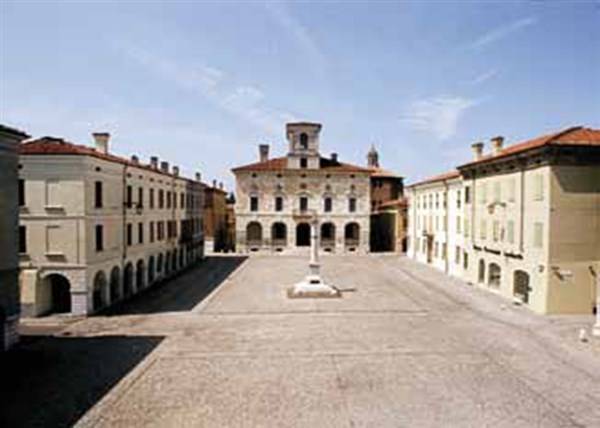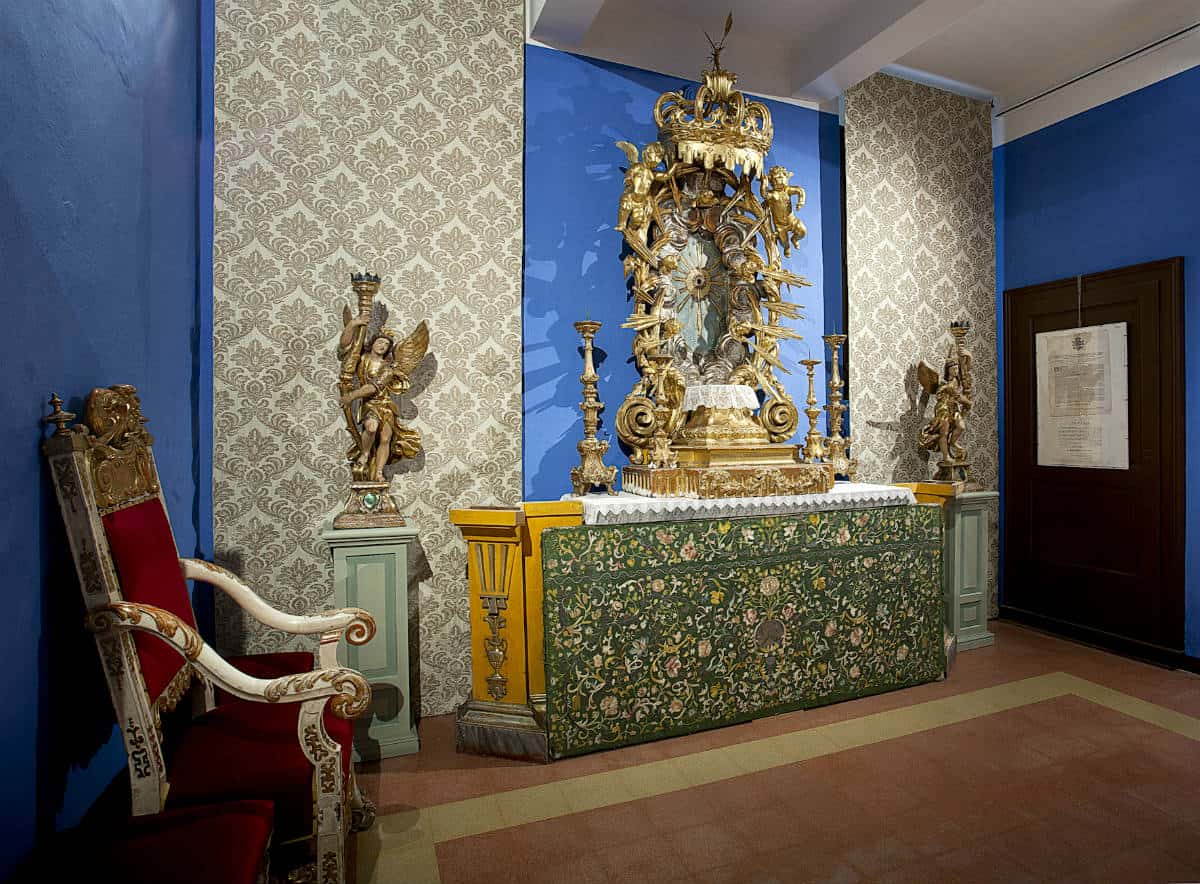In 2018 a museum complex was inaugurated, named after the Duke Vespasiano Gonzaga, founder of the city and inspirer of all the wonders it contains, so that every visitor can grasp the Renaissance spirit of an enlightened prince who still lingers among the ancient walls.
The Museum Complex offers you the chance to visit 7 monumental churches, a church used as an art gallery and the ancient archpriest palace that houses and gathers most of the exhibition sections.
The plebeian archpriest of the Assunta, from the sixteenth century, is entirely frescoed in the 18th century by A. Bresciani and G. Ghidetti with the cycle of the triumph of virtues, in the nave and in the presbytery, and with the exaltation of the Virgin Assumption in the dome. Rich in works of art, the church includes the Cappella delle Reliquie, by Antonio Galli from Bibiena, with the perforated vault, and the Sacristy, with splendid furniture and large canvases. Among the most outstanding relics is the Sacra Spina della Corona by N.S.G.C. and the miraculous Crucifix of St. Charles Borromeo.
The Incoronata, the palatine chapel and pantheon of the Ducal family, has an octagonal plan, modeled on the ancient baptistries, with the precious mausoleum of the Duke Vespasiano Gonzaga, marble work by GB della Porta, decorated with a splendid bronze statue of Leone Leoni, disciple by Michelangelo.On the pilasters is placed the evocative cycle of the Via Matris, and, on the high altar, the papier-mâché statue of the Addolorata, from the 18th century Bolognese school. A cycle of trompe-l’oeil frescoes creates a solemn and mystical setting.
The Oratory of S. Rocco, a church linked to a confraternity, dating back to the sixteenth century, is currently used as an art gallery and houses the conspicuous arcipretary picture gallery, with paintings by B. Campi, Fiammenghino, Bernabei, D. Savi and G Morini, as well as works of modern art.
Il Carmine, a Carmelite convent church, a delightful building with eighteenth-century decoration, severely tested by the 2012 earthquake. Morini’s paintings that adorned the presbytery and side chapels are deposited in the art gallery for security reasons.
The Museo del Ducato, located in the ancient archpriest palace, collects many testimonies of the history and religious experience of the Ideal City in a logical and orderly manner. The Golden Fleece of Duca Vespasiano Gonzaga stands out among all of them.In the area we must mention the church of Sant’Antonio Abate in the hamlet of Villa Pasquali, designed by Ferdinando Galli from Bibbiena and built by his son Antonio Galli, a real jewel for the trefoil plant and, above all, for the massive and airy vaults , which create a unique whole in the world for such “heavenly perspectives”; the small Sanctuary of the Madonna delle Grazie in Vigoreto, formerly annexed to the Capuchin monastery; the pre-church of S. Girolamo in Ponteterra, from the original side chapels and with the Sala dei Confratelli covered by a very interesting cycle of frescoes depicting curious scenes from the Old Testament; the elegant parish church of S. Giorgio M. in Breda Cisoni, a work of Central European taste, from the 2nd half of the 18th century, by the architect P.A. Maggi, embellished by the admirable statues of the stucco-works Stefano Salterio and by the whole Cavalletti organ.
info@museisabbioneta.it



